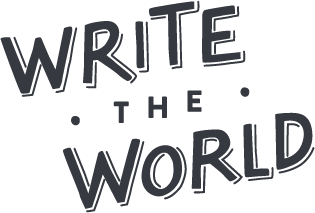There is a scene in Disney’s WALL-E in which the eponymous rusty robot meets Eva, a sleeker robot representing a presumed technological future that—in the age of AI, as engineers are designing Tesla robots to move uncannily like humans—no longer seems far-fetched.
As the two become acquainted, WALL-E introduces Eva to technological inventions of eras past: a light bulb, a colored television, a cassette tape. We see, through the juxtapositions presented in this short scene, a chronology of some of humanity’s most enduring and transformative innovations. And we’re left to wonder what will come next.
AI experts have some ideas. Consider Wharton Business School professor Ethan Mollick, author of the bestselling book on AI, Co-Intelligence, as well as a free, informative newsletter, “One Useful Thing.” On his blog, Mollick breaks down the history, current science, and future advancements of AI. His installment, “The Present Future: AI’s Impact Long Before Superintelligence,” offers that forward-looking lens—showing readers how current AI programs can solve real-world problems, and demonstrating how multimodal AI tools, like avatars that can join Zoom meetings, may evolve to further impact the future of work and learning. Mollick writes:
“These capabilities demand immediate attention to both policy and practice. Even as imperfect as they are, current AI systems are already reshaping fundamental aspects of work—from how we monitor safety to how we conduct meetings. The choices organizations make today about AI deployment will set precedents that could echo for a long time. Will AI-powered monitoring be used to mentor and protect workers, or to impose algorithmic control? Will AI assistants augment human capability, or gradually replace human judgment?”
These resources—WALL-E and Mollick—were recently recommended to Write the World’s teacher audience by YA novelist and former Write the World Guest Judge Jennifer Lewy, author of three YA sci-fi novels that explore technology. An “AI-positive” writer, Jen is passionate about using AI to support her creative process, and she recently shared many actionable ideas for teachers looking to similarly support students in a Q&A video and student-facing blog post.
To inspire critical thinking in the classroom, you can share this unlikely textual pairing—WALL-E and Mollick—to spark students' curiosity and engage them in discussions and writing assignments about AI.
Some sample classroom activities include:
Feel & Wonder. Watch the WALL-E video as a class. Then, engage in a round-robin reading of Mollick’s article, pausing to watch the embedded videos together. (Tip: You can use an AI tool like ChatGPT to make this article more accessible for English Language Learners or students of varying reading levels by copy/pasting the text and asking the AI tool to adjust it to varying Lexile levels). Ask students to notice moments in the text or videos that inspire them to feel or wonder. In their annotations, they should name emotion words, note questions, and identify where in the text/videos they have these responses. As a group, discuss students’ emotional reactions first. Probe them to hypothesize about why the texts evoke these feelings. Next, make a list of students’ questions on the board. Ask students to identify similarities and differences between their and their peers’ responses. What patterns do they notice? Use these patterns, and students’ questions, to inform further discussion, research, or informative/investigative writing assignments.
“Values, Identities, Actions.” After watching and reading the various texts, you can adapt the “VIA” thinking routine from Harvard University’s Project Zero, inviting students to talk or write analytically about AI ethics, audiences, equity issues, and the actions humans can take to leverage AI technologies for civic and social justice.
Conversation with an Expert. Invite students to respond to the questions Mollick poses in the excerpt quoted above. They might do so in several ways, such as:
- An opinion essay sharing their perspective on, and predictions for, AI—rooted in research.
- An analytical essay that asserts a thesis statement in response to Mollick’s questions and parses AI texts—such as those cited above, or others you’ve used in your curriculum—to glean evidence in support of that thesis.
- A creative writing assignment in which they respond to Mollick’s questions from the perspective of WALL-E or Eva; students should also include a brief writer’s statement demonstrating analytical thinking about character development and conflict, explaining how they made creative choices to intuit and portray these character’s hypothetical thoughts on the page. (E.g. what in the WALL-E clip made them think WALL-E would have these particular thoughts/feelings about the future of AI?).
- A personal narrative essay exploring themes of technology, innovation, and problem-solving in students’ personal lives. What memories, experiences, or conversations come to mind in response to Mollick’s questions? How have students used AI or other technology to solve a real-world problem? How have they worked to balance the ethical concerns Mollick raises, using technology to augment but not replace humanity?
All of these activities align with Common Core State Standards for Writing in grades 6-12 in the United States. For more inspiration or to share additional text-based resources with students, we invite you to explore this AI-themed issue (issue 6.1) of our online literary journal, Write the World Review, featuring poetry and prose exploring AI written by teens around the world.
Eager to share your students’ work with an authentic audience? If you implement any of the classroom activities above, let us know at educators@writetheworld.org for a chance to be featured in a future blog post!





